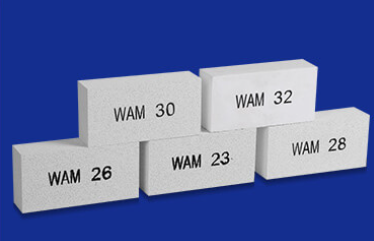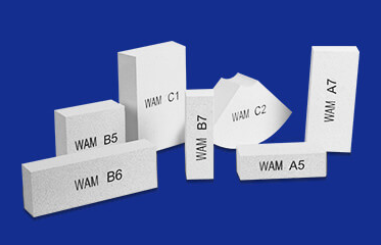The Best Solution For Energy Saving And Reducing CO2 Emission
The Best Solution For Energy Saving And Reducing CO2 Emission
 Tel: +86-532-85717690/85717352/85832089
Tel: +86-532-85717690/85717352/85832089 E-mail: wam@wamcn.net
E-mail: wam@wamcn.net
Insulating bricks can be laid using different patterns, in different arrangements, with different surfaces exposed to the exterior. In simple terms, you might describe a brick as being vertical, horizontal, sideways, or lying flat, but these fail to convey both the attitude and the position of the brick.
As a result, the following terms have been created to more precisely describe how bricks are laid in brick walls and elsewhere:
· Header: The short side of the brick faces toward you with the brick laid flat like you were looking end-on at a wide, square hot dog you were about to eat.
· Rowlock: The short side of the brick is turned toward you, but with the brick turned on its side so it’s taller.
· Stretcher: The long side of the brick faces toward you, with the brick laid flat, as though you were looking at a hamburger or sandwich.

· Shiner: The same as a stretcher, but with the brick taller because it’s resting on its narrower edge.
· Soldier: The brick “standing at attention” on its end, with the narrow side facing toward you.
· Sailor: The brick standing on its end again, but with the wider side facing toward you.
A course is a horizontal layer of brick. When a row of bricks is laid in a wall, it’s called a course.
In a stretcher course, all the bricks are flat and parallel to the wall; in a header course, all the bricks are flat and perpendicular to the wall. As a result, it will take more bricks laid side-by-side in a header course to complete the same wall width than if you laid them side-by-side in a stretcher course. It will also create a thicker wall.
You can make use of different bond patterns for various purposes in brickwork. For example, the bonds listed below are often found on building faces.
· Common Bond: A series of stretcher courses, as in the running bond, but with a header course every fifth, sixth, or seventh course.
· English Bond: is a series of alternating rows of header and stretcher courses. This creates a wall that’s both thick and strongly built, although it’s just one brick thick.
· Flemish Bond: consists of alternating stretchers and headers in each row. This option provides a slightly more symmetrical look than the English bond, but is a little less sturdy, although it’s still thick.
· Stack Bond: All courses are stretchers, as with the running bond, but each brick is placed directly on top of the one below it, with the joints in line. This creates a more symmetrical aesthetic look, but it has little structural value and is typically used as a veneer over load-bearing walls.
· Header Bond: All courses are headers and the overlap occurs at the half width of the bricks. This is often used for thick brick walls.
· Stretcher Bond: A bond made up exclusively of stretchers (sometimes used interchangeably with “running bond”). It creates less wasted material because the bricks don’t need to be cut to size.
These aren’t the only bonds, and other brick bonds may be used in situations that don’t require load-bearing capabilities, such as veneers and road paving. Because the structural aspect of bearing loads isn’t involved, bonds can be a little more creative.

Bricks can be used in a variety of ways for both functional and aesthetic purposes, and projects can involve bricklaying by hand or with the help of equipment such as forklifts and telehandlers.
The kind of brick you choose and the type of bonds you make use of will depend on the project undertaken, including whether you’re building a load-bearing wall or are creating something more for aesthetic purposes.
Either way, understanding sizes, dimensions, and the types of material available, as well as working with a professional insulating brick supplier is essential to successfully complete your project.
Click here to check out and purchase your insulating bricks.